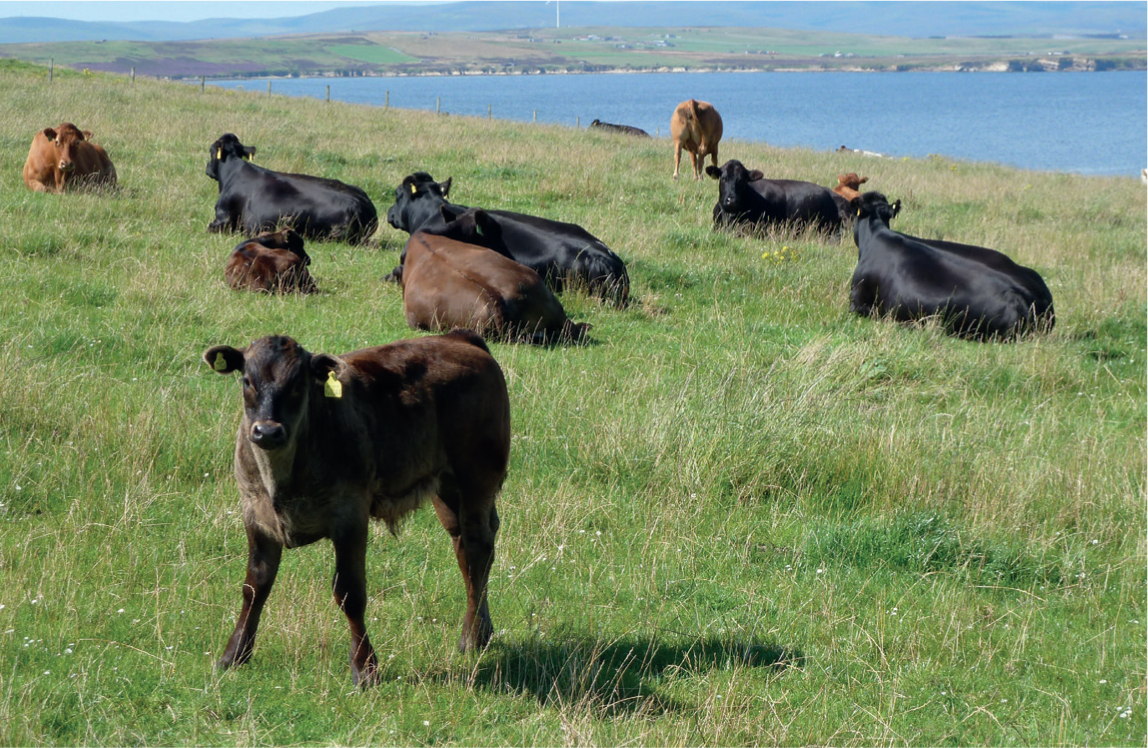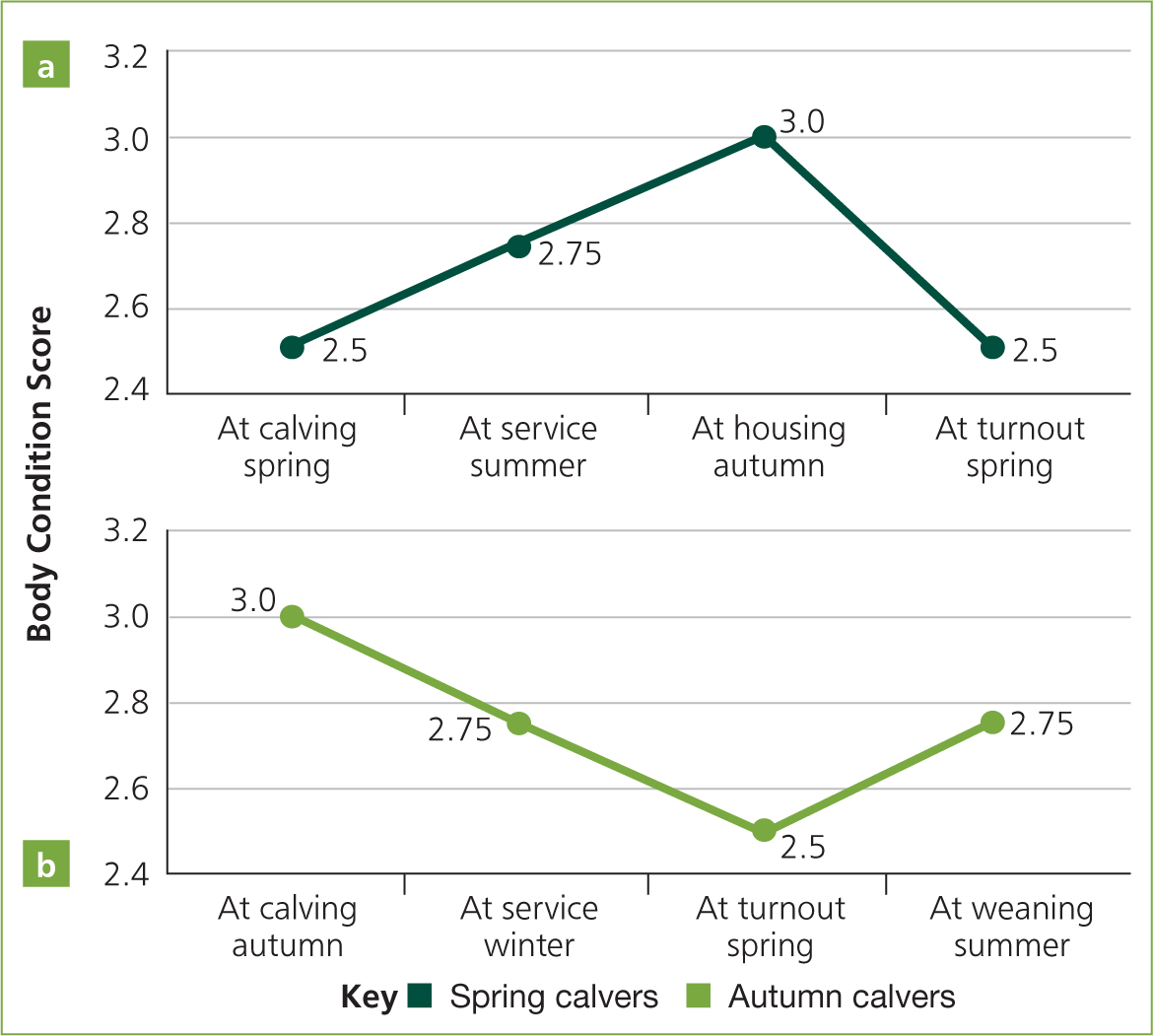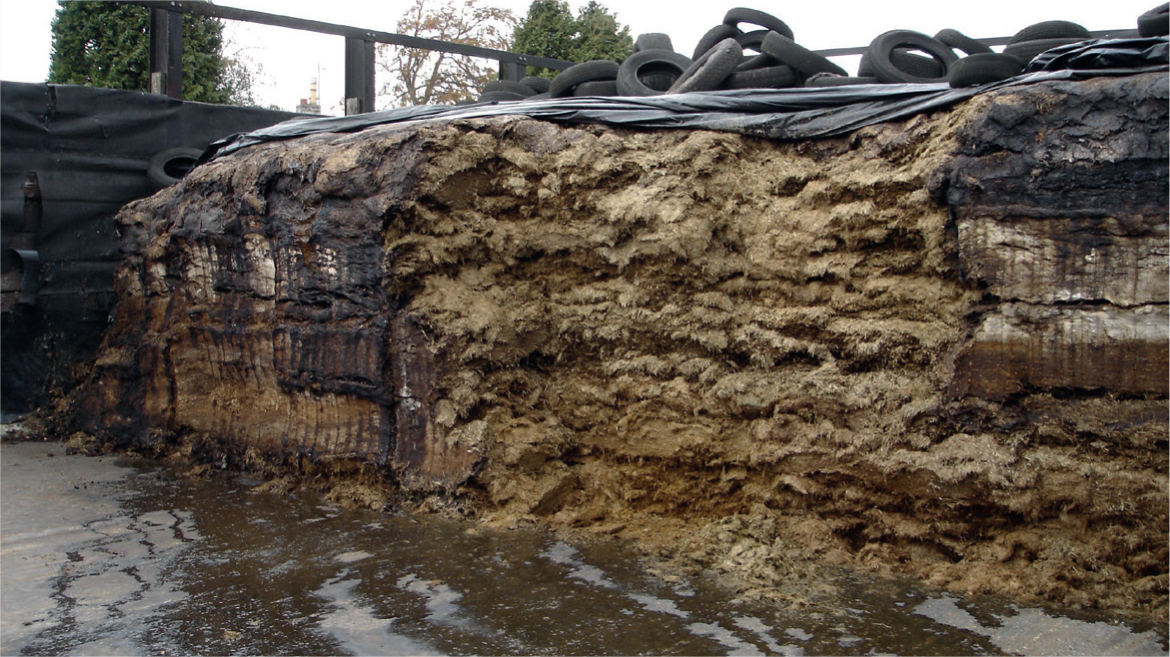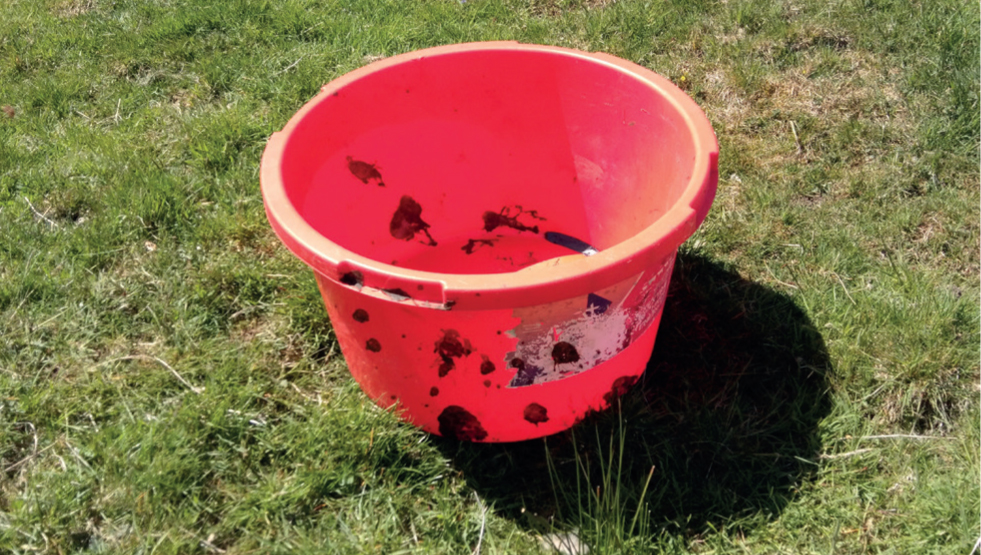The primary objective of feeding suckler cows is to produce one viable calf per cow each year, maintain cow health, maximise reproductive efficiency and achieve high calf growth rates during the milk rearing phase (Figure 1). However, given that feeding represents the highest variable cost in suckler cow production, it is important that all feeding decisions are not just made for the least cost, as this may result in compromises that might affect cow and calf health, as well as reduce cow fertility, and so annual production in the herd.

Table 1 shows the main nutritional guidelines for a mature 650 kg suckler cow during key stages of the production cycle. These guidelines will vary according to factors, such as cow condition, controlled weight loss and feedstuffs used. However it should be noted that for a dry suckler cow in late pregnancy, ad-lib intakes (10 kg dry matter (DM)) of modest quality silage (9.5 MJ/kg DM) will easily meet the energy requirements of these cows, and indeed could potentially result in these cows putting on excessive amounts of body condition if fed over the whole winter housing period.
Table 1. Main nutritional guidelines for a mature 650 kg suckler cow
| Dry matter intake (kg per day) | Energy requirements (MJ of ME per day) | Crude protein (% of dry matter) | |
|---|---|---|---|
| Early lactation | 12–14 | 120–130 | 11–12 |
| Late lactation | 9–11 | 85–95 | 11 |
| Dry | 10 | 75–80 | 9 |
NFC, 2016; AHDB, 2019. ME = metabolisable energy
Control of cow body condition score (BCS) is key for overall profitability and monitoring of nutrition. For the average suckler cow, one BCS unit is approximately 13% of liveweight or 85 kg, and 1 kg of body condition loss supplies the cow with approximately 35 MJ of metabolisable energy (ME) (Agriculture and Horticulture Development Board (AHDB), 2019). Therefore spring calving cows that are housed in BCS 3.5 can afford to lose around 0.5 kg per day, which would reduce BCS to 3.0 at calving, and this would provide a substantial saving on winter feeding costs. However the energy required to gain 1 kg of liveweight in the pregnant cow is 40 MJ of ME, and this would need to be budgeted for if the cows were thin at housing, and needed to gain body condition.
Cows require an additional 25–30 MJ per day in the last 2 months of pregnancy, although this is difficult to practically implement in suckler herds as calving dates are usually unknown. Early pregnancy diagnosis may help in this regard, and help targeted feeding of cows in the last month of pregnancy. Veterinary pregnancy diagnosis will also help pick up cows carrying twins, which require an extra 20–25 MJ per day in late pregnancy, and they can be closely monitored and split into a separate feeding group with the thinner cows for targeted supplementation.
Example winter rations are provided for both spring calving cows (Table 2) and autumn calving cows with calves at foot (Table 3). It should be noted that these diets would also include appropriate mineral supplementation, and will vary according to forage quality and quantity available.
Table 2. Example winter rations for spring calving dry suckler cows. All figures are kg fresh weight as fed. An appropriate mineral would be fed in addition for all diets
| Fat cows BCS>3, losing 0.5 kg per day | Normal cows BCS 3, no weight change | Thin cows BCS < 2.5, gaining 0.5 kg per day | Straw-based diet, no weight change | Hay-based diet, no weight change | |
|---|---|---|---|---|---|
| Grass silage 25% DM, 10 ME | 17 | 25 | 32 | - | - |
| Hay 80% DM, 8.5 ME | - | - | - | - | 9.5 |
| Straw | 5 | 4 | 2 | 10 | - |
| Barley | - | - | 1 | 0.9 | - |
| Rapemeal | - | - | - | 1.2 | 0.6 |
ME = metabolisable energy; BCS = body condition score
Table 3. Example winter rations for autumn calving suckler cows with calves at foot. All figures are kg fresh weigh as fed. An appropriate mineral would be fed in addition for all diets
| Diet A | Diet B | Diet C | Diet D | |
|---|---|---|---|---|
| Grass silage 25% DM, 10 ME | 45 | - | - | - |
| Hay 80% DM, 8.5 ME | - | 13.5 | - | - |
| Straw | - | - | 8.5 | 8.5 |
| Barley | 1 | 0.6 | 5 | - |
| Rapemeal | 1 | 1.2 | 1.5 | - |
| Distillers grains | - | - | 6.0 |
ME = metabolisable energy
Assessment of nutritional status in late pregnancy
As detailed in Tables 2 and 3, example rations can be constructed for suckler beef cows depending on stage of production and estimated requirements. AHDB Beef has an excellent ration calculator that can be used to check on beef ration adequacy, although it should not replace advice from a suitably qualified nutritionist (AHDB, 2015). However there are a number of issues with nutritional management that might mean that a ration that looks adequate on paper does not supply the nutritional requirements of the cows, for example because the forage analysis is not representative, or the silage has poor palatability, or there are errors in feeding the cows, or feed space is inadequate resulting in bullying of less dominant animals such as heifers. Therefore assessment of nutritional status should examine the effects of the diet on the cows, and there are a number of methods to achieve this.
Body condition scoring
As mentioned previously, careful management of cow condition throughout the year is crucial to maintain good cow reproductive efficiency, as well as utilising body reserves during the winter to reduce feed costs. Examples of appropriate BCS targets are given in Figure 2, and it should be noted that the core principles are that: a) cow BCS should never fall below 2.5; and b) cows are allowed to build body reserves during summer grazing at grass, so that controlled mobilisation of any excess body condition can occur during the winter housing period to save on feed costs.

The key is that cows are body condition scored at regular periods through the production cycle, and that action is taken for those cows outwith the BCS targets. Body condition scoring should occur at key times such as housing, turnout, 1 month prior to calving, 1 month prior to mating when the cows are potentially being handled for vaccination and/or fluke treatment. Individual cows in poor BCS (below 2.5) can be targeted for examination for underlying disease issues, but more widespread issues require the cows to be separated into groups for targeted feeding (as outlined in Table 2). Cows can also be practically grouped according to calving date if known, and heifers can also be separated to allow for better feed access.
Forage analysis
Given that the diet on the vast majority of beef suckler farms for feeding during the winter housing period will be based on grass silage or hay, getting a representative analysis is important in order to work out how much forage stocks will be available for the winter housing period, and what levels of supplementation are required (Figure 3). The exception to this is straw-based rations, as the nutritional content of straw is poor and so general assumptions on its quality are sufficiently accurate.

As an example of the importance of forage analysis, dry cows eating 10 kg DM will need to eat 50 kg fresh weight of 20% DM silage, but only 25 kg of 40% DM silage. This has important implications for calculating silage stocks over the winter period, as cows will need to eat twice as much of the 20% DM silage. Forage stocks and feed budgets can be calculated for the coming winter period, with a buffer reserve in case of a cold spring and late turnout. If forage stocks are tight, then planning a feed budget based on sparing forage stocks with 1 kg straw or forage replacers (such as brewer's grains or other moist feeds) over the winter period is better, compared with having to drastically alter diets in the last month of pregnancy or during calving when forage stocks run out.
As outlined in Tables 2 and 3, appropriate supplementation can then be employed for balancing the forage stocks available. Note that this might not always be to supply additional energy or protein: high energy silages fed ad-lib may result in excessive body condition gain in dry suckler cows, in which case mixing the silage with straw may be beneficial to reduce energy intakes. Forages that are low in protein (such as poor quality silage or straw) will need supplementing with a source of effective rumen degradable protein (ERDP) to ensure that rumen function and forage digestion in the rumen is maintained. Such a lack of ERDP may result in poor rumen function and rumen impactions, which can be fatal. Good quality forages can be targeted for cows with calves at foot, thin cows and heifers (with higher energy and protein requirements), whereas poorer quality forages can be fed to dry cows during mid pregnancy.
Metabolic profile blood sampling
Although body condition scoring remains an important tool for assessing long-term nutritional status, metabolic profile blood sampling can be a useful management tool to assess relatively short-term nutritional status. It allows corrective action to be taken to assist with calf health and herd fertility, especially when rapid changes are necessary (for example with calving imminent). With tight calving blocks advocated, suckler beef herds have only one chance a year to get nutrition right, and any problems can have potentially harmful long-term effects on herd productivity and profitability.
There are generally two options used for blood sampling beef herds during winter housing. The first option is to blood sample once the cows are fully housed and settled on winter rations, usually in November or December. This enables an early check to be made on the winter rations to ensure that the diet is properly balanced for energy, protein and mineral supply, and corrects any issues before long-lasting damage occurs. The second option is to blood sample in the last month before calving starts, when the nutritional requirements of the cows increase as calving approaches. Not only is this a critical time for cow and calf health, but it is also the period of greatest nutritional stress for the cow.
A minimum number of six cows should be blood sampled per feeding group, and these animals should be representative of the herd. This sample size is based on recommendations for blood sampling for the assessment of excessive negative energy balance in dairy herds (for example detecting 20% prevalence of subclinical ketosis at 75% confidence interval (LeBlanc, 2010)), or assessment of mineral balance (Suttle, 2010). However practitioners should be aware that increasing the sample size will increase the accuracy and correct classification of nutritional issues within the group.
Cows should ideally be settled on the ration for at least 2 weeks prior to sampling, and care should be taken to ensure that the cows do not have restricted access to feed in the previous 24–48 hours prior to sampling, as such short-term issues with feed intakes can affect some of the biochemical parameters. At the same time as blood sampling, cow BCS and weight, and details of the ration (including any forage analyses) are important for the interpretation of the cows' biochemical results.
There are a large number of biochemical parameters that can be assessed, but any laboratory analysis needs to be cost-effective. Assessment of energy status is usually undertaken by analysing for β-hydroxybutyrate (BHB), non-esterified fatty acids (NEFA) and glucose; short-term intakes and utilisation of ERDP can be assessed using urea or urea-N, while albumin and globulin levels can indicate disease issues; magnesium and phosphate assess short-term intakes of these major minerals; and trace element status can be checked using plasma copper, GSHPx and plasma inorganic iodine (PII). Further details are provided by the laboratories that provide beef metabolic profiling services in the UK: Scotland's Rural College (SRUC) (2021a) or and the Dairy Herd Health Productivity Service (DHHPS) (www.ed.ac.uk/vet/dhhps).
Blood sampling can be useful in a number of scenarios. For example, cows should be back in positive energy balance in late pregnancy and not losing excessive amounts of body condition at this critical stage, and this can be assessed by checking for levels of BHB and NEFA. As discussed previously, cows fed a diet low in ERDP may result in rumen impactions, and this can be checked by looking at blood urea/urea-N values. Poor magnesium intakes in late pregnancy have been associated with subclinical hypocalcaemia and ‘slow calvings’ (SRUC, 2021b), and assessment of blood magnesium concentrations can readily demonstrate if magnesium intakes are insufficient. Therefore, metabolic profile blood sampling can help check that the ration is working as planned.
Where can problems occur?
Although mineral imbalances can occur, the most common issues related to feeding suckler cows during pregnancy involve the management of cow body condition, especially cows that are too fat or too thin related to BCS targets.
Cows that are over-fat (over BCS 3.5) can afford to lose excess body condition in a controlled manner over the winter housing period to save on feed costs. However any effects of excessive body condition loss on beef suckler cow health are largely extrapolated from dairy cows, and the widely held belief that over-fat beef cows are more prone to calving difficulties is not supported by recent research (Bragg et al, 2021). Other research suggests that it is the loss of body condition that is more critical than actual cow BCS per se, with cows that lost more than ½ unit of BCS in late pregnancy having calves that were 5% smaller than cows that stayed within ½ unit BCS loss (Turner et al, 2021).
Loss of excess body condition in over-fat cows in late pregnancy therefore needs to be controlled. Cows can be grouped by BCS, for example fat (over BCS 3.5), correct (BCS 2.5–3.5) and thin (BCS 2.0 or below). Over-fat cows can be weaned later, to ensure that milk production (and thus energy demands) are maintained. Any feeding plan to reduce energy intakes needs to maintain rumen fill, and this can be achieved by the use of restricted grazing with access to ad-lib straw. During winter housing, a mix of silage and straw, or poorer quality silage can also restrict energy intakes while keeping the rumen full. However, if straw only is fed in late pregnancy, then a source of ERDP will be necessary to maintain rumen function. However, any under-feeding must be stopped in the last month of pregnancy, with the aim that the cows are back in positive energy balance prior to calving. In autumn calving cows, it is also important that they are not under-fed during mating, especially if they are in poor BCS at calving.
Cows that are too thin (BCS 2.0 or below) should be checked for any underlying disease issues such as liver fluke, lameness or chronic pneumonia, which will usually result in low albumin and/or high globulin results in a metabolic profile. Carrying twins may be another reason that cows become too thin in late pregnancy, and can result in the development of pregnancy toxaemia in beef cattle. Those cows that are too thin should be moved into a separate group, and their calves either weaned or creep fed to reduce the demands on milk production on the cows. A separate group allows for nutrition to be improved to increase energy intakes: this might include increased grazing allowances in the summer, earlier winter housing in the autumn (out-wintering can increase the cow's energy requirements by 15%), and increased ad-lib forage access and/or some supplementation with cereal grains during winter feeding. Thin cows will struggle to get back in calf again (AHDB, 2019), and so a long-term plan needs to be put in place over the winter housing period to ensure that the cows calve down in adequate BCS (see Figure 2), and maintain this during the mating period.
Most of the cows' calcium and phosphorous requirements will be met from grazed grass, although supplementation may be required for autumn calving cows that are housed and being fed silage or straw-based rations when the calf is suckling significant amounts of milk. However, magnesium is often under-supplied, especially if magnesium absorption is impaired as a result of high potassium levels or other antagonists in the diet. Studies have shown that around 30% of pregnant suckler cows have low blood magnesium status in late pregnancy (Corbishley et al, 2021), and this can result in subclinical hypocalcaemia at calving, with subsequent calving difficulties and increased calf mortality (a syndrome known as ‘slow calvings’). Standard recommended intakes of magnesium in late pregnancy are 20–30 g of magnesium per cow per day, but this should be increased to 30–40 g per cow per day if potassium levels in the grass silage are high (SRUC, 2021b). After calving, the high demands of magnesium in lactating cattle may result in grass staggers, and so supplementation with magnesium in cows with calves at foot is recommended. This is especially critical during periods of severe weather and/or rapid grass growth in the spring and autumn.
Trace element supply is critical in both late pregnancy and the period after calving until pregnancy is established, and therefore supplementation for the period from 1 month precalving until 3 months post-calving is key. In terms of calf viability, adequate supplementation with selenium, vitamin E and iodine would be considered the key trace elements. Potential effects on cow fertility would be expected from deficiencies in selenium, iodine and copper (accompanied by excess molybdenum supply), although evidence for these trace elements having significant effects on suckler cow fertility in the UK is limited. However, supplementation using 100–120 g per cow per day of a good quality proprietary suckler cow mineral will usually supply the cows' requirements in the majority of circumstances, although slow-release boluses may be worthwhile when cows are at grass. Despite often variable mineral supplementation (especially at grass: Figure 4), recent research blood sampling 988 cows in 84 British spring calving suckler herds showed only a small proportion of the cows sampled had any evidence of copper, selenium or iodine deficiency (Corbishley et al, 2021).

Conclusions
Monitoring of nutritional status in the beef suckler cow during pregnancy is readily achieved by regularly assessing cow body condition, and issues with either thin (under BCS 2.5) or over-fat (over BCS 3.5) cows can be identified, and appropriate corrective action undertaken. However, assessment of short-term nutritional status in late pregnancy using metabolic profiles can help pick up nutritional problems before they cause harmful impacts on cow and calf health, and potentially future cow fertility.
KEY POINTS
- The nutritional requirements of beef cows during pregnancy are relatively modest, and can be readily supplied using quality forages and/or appropriate supplementation.
- Regular cow body condition scoring should be undertaken to monitor nutritional status.
- Corrective action for cows that are too thin (under body condition score (BCS) 2.5) or over-fat (over BCS 3.5) can include separate feeding groups, and appropriate supplementation.
- Forage analysis is important for assessing forage stocks and quality.
- Metabolic profile blood sampling can quickly identify nutritional constraints before they impact on cow health and productivity.


